Travelers 2014 Annual Report Download - page 217
Download and view the complete annual report
Please find page 217 of the 2014 Travelers annual report below. You can navigate through the pages in the report by either clicking on the pages listed below, or by using the keyword search tool below to find specific information within the annual report.-
 1
1 -
 2
2 -
 3
3 -
 4
4 -
 5
5 -
 6
6 -
 7
7 -
 8
8 -
 9
9 -
 10
10 -
 11
11 -
 12
12 -
 13
13 -
 14
14 -
 15
15 -
 16
16 -
 17
17 -
 18
18 -
 19
19 -
 20
20 -
 21
21 -
 22
22 -
 23
23 -
 24
24 -
 25
25 -
 26
26 -
 27
27 -
 28
28 -
 29
29 -
 30
30 -
 31
31 -
 32
32 -
 33
33 -
 34
34 -
 35
35 -
 36
36 -
 37
37 -
 38
38 -
 39
39 -
 40
40 -
 41
41 -
 42
42 -
 43
43 -
 44
44 -
 45
45 -
 46
46 -
 47
47 -
 48
48 -
 49
49 -
 50
50 -
 51
51 -
 52
52 -
 53
53 -
 54
54 -
 55
55 -
 56
56 -
 57
57 -
 58
58 -
 59
59 -
 60
60 -
 61
61 -
 62
62 -
 63
63 -
 64
64 -
 65
65 -
 66
66 -
 67
67 -
 68
68 -
 69
69 -
 70
70 -
 71
71 -
 72
72 -
 73
73 -
 74
74 -
 75
75 -
 76
76 -
 77
77 -
 78
78 -
 79
79 -
 80
80 -
 81
81 -
 82
82 -
 83
83 -
 84
84 -
 85
85 -
 86
86 -
 87
87 -
 88
88 -
 89
89 -
 90
90 -
 91
91 -
 92
92 -
 93
93 -
 94
94 -
 95
95 -
 96
96 -
 97
97 -
 98
98 -
 99
99 -
 100
100 -
 101
101 -
 102
102 -
 103
103 -
 104
104 -
 105
105 -
 106
106 -
 107
107 -
 108
108 -
 109
109 -
 110
110 -
 111
111 -
 112
112 -
 113
113 -
 114
114 -
 115
115 -
 116
116 -
 117
117 -
 118
118 -
 119
119 -
 120
120 -
 121
121 -
 122
122 -
 123
123 -
 124
124 -
 125
125 -
 126
126 -
 127
127 -
 128
128 -
 129
129 -
 130
130 -
 131
131 -
 132
132 -
 133
133 -
 134
134 -
 135
135 -
 136
136 -
 137
137 -
 138
138 -
 139
139 -
 140
140 -
 141
141 -
 142
142 -
 143
143 -
 144
144 -
 145
145 -
 146
146 -
 147
147 -
 148
148 -
 149
149 -
 150
150 -
 151
151 -
 152
152 -
 153
153 -
 154
154 -
 155
155 -
 156
156 -
 157
157 -
 158
158 -
 159
159 -
 160
160 -
 161
161 -
 162
162 -
 163
163 -
 164
164 -
 165
165 -
 166
166 -
 167
167 -
 168
168 -
 169
169 -
 170
170 -
 171
171 -
 172
172 -
 173
173 -
 174
174 -
 175
175 -
 176
176 -
 177
177 -
 178
178 -
 179
179 -
 180
180 -
 181
181 -
 182
182 -
 183
183 -
 184
184 -
 185
185 -
 186
186 -
 187
187 -
 188
188 -
 189
189 -
 190
190 -
 191
191 -
 192
192 -
 193
193 -
 194
194 -
 195
195 -
 196
196 -
 197
197 -
 198
198 -
 199
199 -
 200
200 -
 201
201 -
 202
202 -
 203
203 -
 204
204 -
 205
205 -
 206
206 -
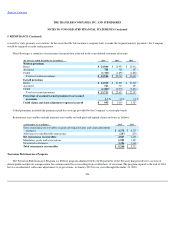 207
207 -
 208
208 -
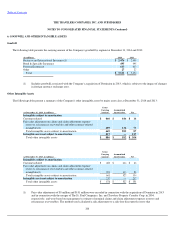 209
209 -
 210
210 -
 211
211 -
 212
212 -
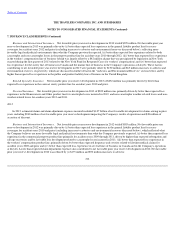 213
213 -
 214
214 -
 215
215 -
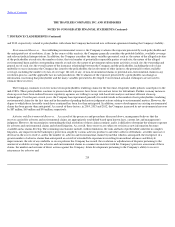 216
216 -
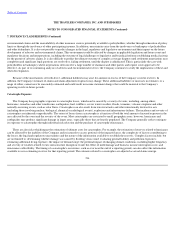 217
217 -
 218
218 -
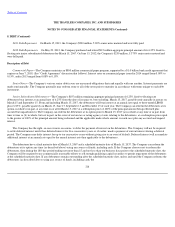 219
219 -
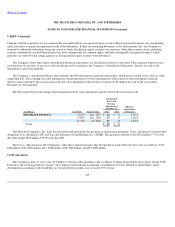 220
220 -
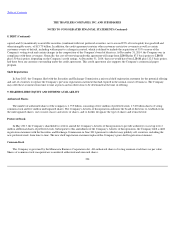 221
221 -
 222
222 -
 223
223 -
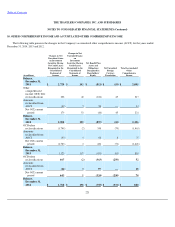 224
224 -
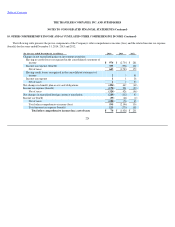 225
225 -
 226
226 -
 227
227 -
 228
228 -
 229
229 -
 230
230 -
 231
231 -
 232
232 -
 233
233 -
 234
234 -
 235
235 -
 236
236 -
 237
237 -
 238
238 -
 239
239 -
 240
240 -
 241
241 -
 242
242 -
 243
243 -
 244
244 -
 245
245 -
 246
246 -
 247
247 -
 248
248 -
 249
249 -
 250
250 -
 251
251 -
 252
252 -
 253
253 -
 254
254 -
 255
255 -
 256
256 -
 257
257 -
 258
258 -
 259
259 -
 260
260 -
 261
261 -
 262
262 -
 263
263 -
 264
264 -
 265
265 -
 266
266 -
 267
267 -
 268
268 -
 269
269 -
 270
270 -
 271
271 -
 272
272 -
 273
273 -
 274
274 -
 275
275 -
 276
276 -
 277
277 -
 278
278 -
 279
279 -
 280
280 -
 281
281 -
 282
282 -
 283
283 -
 284
284 -
 285
285 -
 286
286 -
 287
287 -
 288
288 -
 289
289 -
 290
290 -
 291
291 -
 292
292 -
 293
293 -
 294
294 -
 295
295 -
 296
296 -
 297
297 -
 298
298 -
 299
299 -
 300
300 -
 301
301 -
 302
302 -
 303
303 -
 304
304 -
 305
305 -
 306
306 -
 307
307 -
 308
308 -
 309
309 -
 310
310 -
 311
311 -
 312
312 -
 313
313 -
 314
314 -
 315
315 -
 316
316 -
 317
317 -
 318
318 -
 319
319 -
 320
320 -
 321
321 -
 322
322 -
 323
323 -
 324
324 -
 325
325 -
 326
326 -
 327
327 -
 328
328 -
 329
329 -
 330
330 -
 331
331 -
 332
332 -
 333
333 -
 334
334 -
 335
335 -
 336
336 -
 337
337 -
 338
338 -
 339
339 -
 340
340 -
 341
341 -
 342
342 -
 343
343 -
 344
344 -
 345
345 -
 346
346 -
 347
347 -
 348
348 -
 349
349 -
 350
350 -
 351
351 -
 352
352 -
 353
353 -
 354
354 -
 355
355 -
 356
356 -
 357
357 -
 358
358 -
 359
359 -
 360
360 -
 361
361 -
 362
362 -
 363
363 -
 364
364 -
 365
365 -
 366
366
 |
 |

Table of Contents
THE TRAVELERS COMPANIES, INC. AND SUBSIDIARIES
NOTES TO CONSOLIDATED FINANCIAL STATEMENTS (Continued)
7. INSURANCE CLAIM RESERVES (Continued)
environmental claims and the unavailability of other insurance sources potentially available to policyholders, whether through exhaustion of policy
limits or through the insolvency of other participating insurers. In addition, uncertainties arise from the insolvency or bankruptcy of policyholders
and other defendants. It is also not possible to predict changes in the legal, regulatory and legislative environment and their impact on the future
development of asbestos and environmental claims. This environment could be affected by changes in applicable legislation and future court and
regulatory decisions and interpretations, including the outcome of legal challenges to legislative and/or judicial reforms establishing medical criteria
for the pursuit of asbestos claims. It is also difficult to predict the ultimate outcome of complex coverage disputes until settlement negotiations near
completion and significant legal questions are resolved or, failing settlement, until the dispute is adjudicated. This is particularly the case with
policyholders in bankruptcy where negotiations often involve a large number of claimants and other parties and require court approval to be
effective. As part of its continuing analysis of asbestos and environmental reserves, the Company continues to study the implications of these and
other developments.
Because of the uncertainties set forth above, additional liabilities may arise for amounts in excess of the Company's current reserves. In
addition, the Company's estimate of claims and claim adjustment expenses may change. These additional liabilities or increases in estimates, or a
range of either, cannot now be reasonably estimated and could result in income statement charges that could be material to the Company's
operating results in future periods.
Catastrophe Exposure
The Company has geographic exposure to catastrophe losses, which can be caused by a variety of events, including, among others,
hurricanes, tornadoes and other windstorms, earthquakes, hail, wildfires, severe winter weather, floods, tsunamis, volcanic eruptions and other
naturally
-
occurring events, such as solar flares. Catastrophes can also result from terrorist attacks and other intentionally destructive acts
(including those involving nuclear, biological, chemical or radiological events), explosions and infrastructure failures. The incidence and severity of
catastrophes are inherently unpredictable. The extent of losses from a catastrophe is a function of both the total amount of insured exposure in the
area affected by the event and the severity of the event. Most catastrophes are restricted to small geographic areas; however, hurricanes and
earthquakes may produce significant damage in larger areas, especially those that are heavily populated. The Company generally seeks to mitigate
its exposure to catastrophes through individual risk selection and the purchase of catastrophe reinsurance.
There are also risks which impact the estimation of ultimate costs for catastrophes. For example, the estimation of reserves related to hurricanes
can be affected by the inability of the Company and its insureds to access portions of the impacted areas, the complexity of factors contributing to
the losses, the legal and regulatory uncertainties and the nature of the information available to establish the reserves. Complex factors include, but
are not limited to: determining whether damage was caused by flooding versus wind; evaluating general liability and pollution exposures;
estimating additional living expenses; the impact of demand surge; the potential impact of changing climate conditions, including higher frequency
and severity of weather
-
related events; infrastructure disruption; fraud; the effect of mold damage and business income interruption costs; and
reinsurance collectibility. The timing of a catastrophe's occurrence, such as at or near the end of a reporting period, can also affect the information
available to us in estimating reserves for that reporting period. The estimates related to catastrophes are adjusted as actual claims emerge.
216
